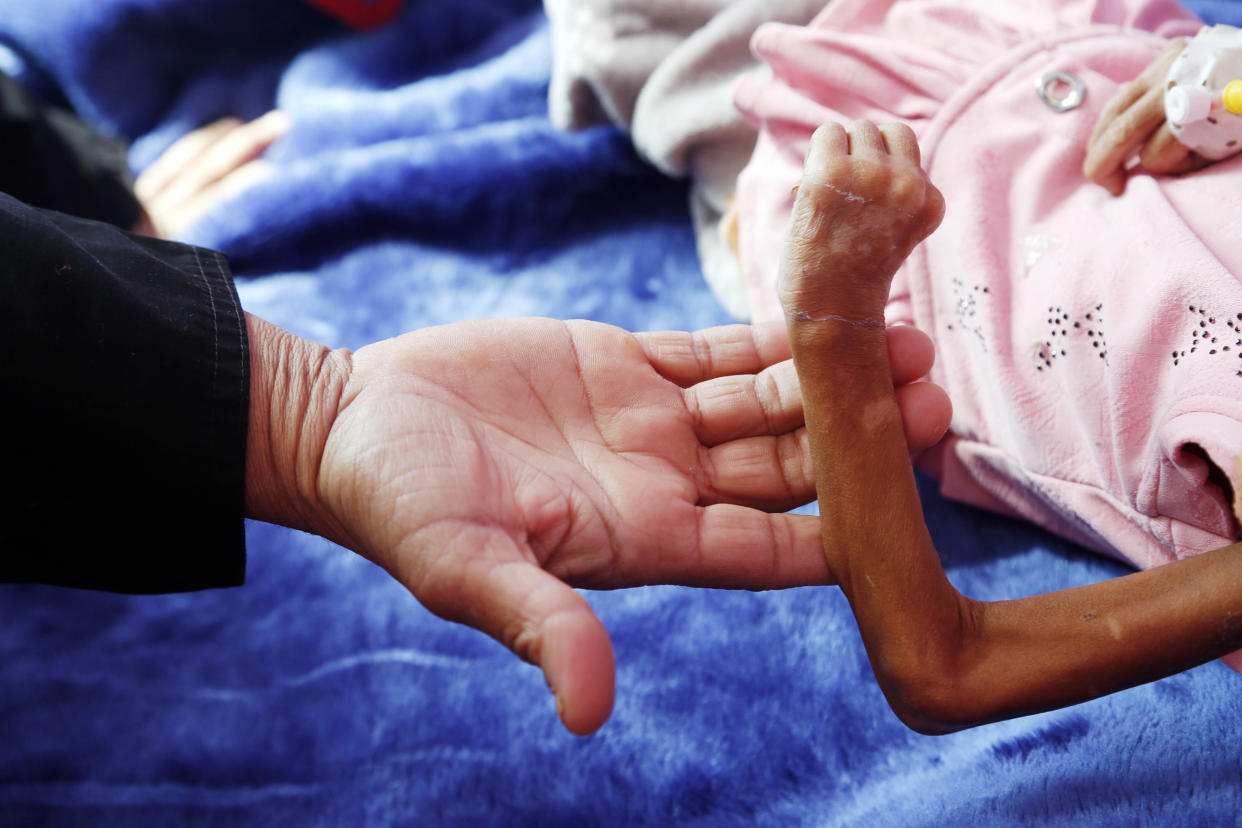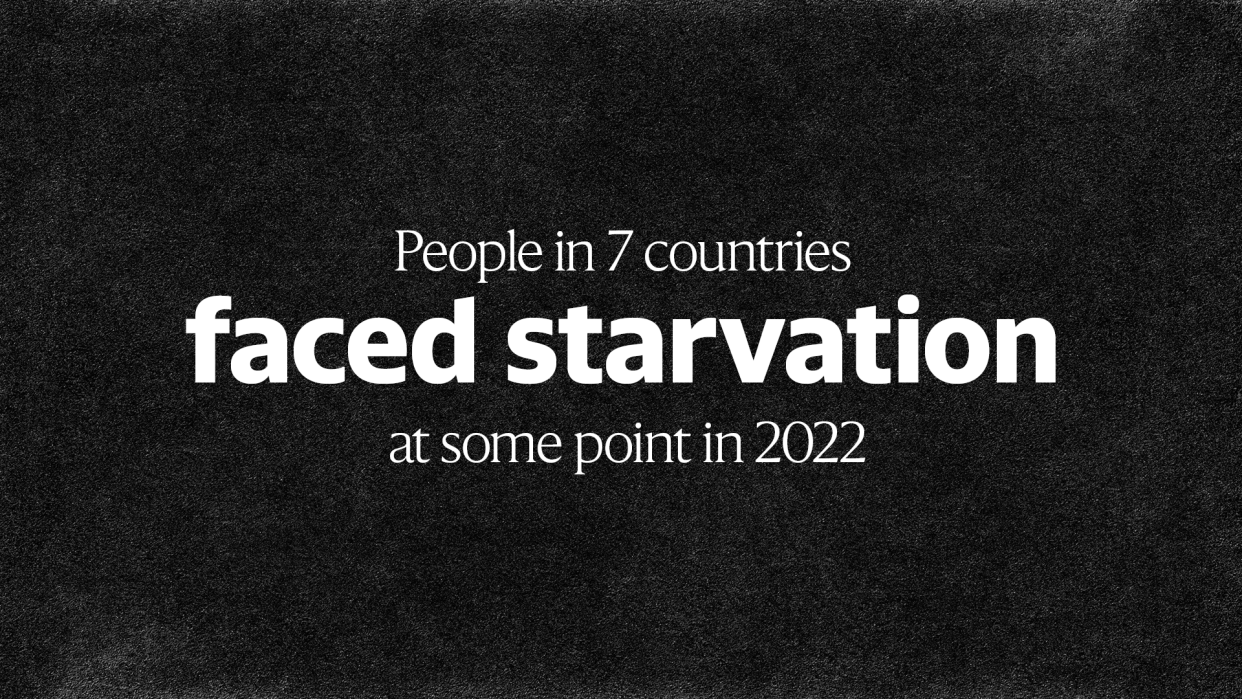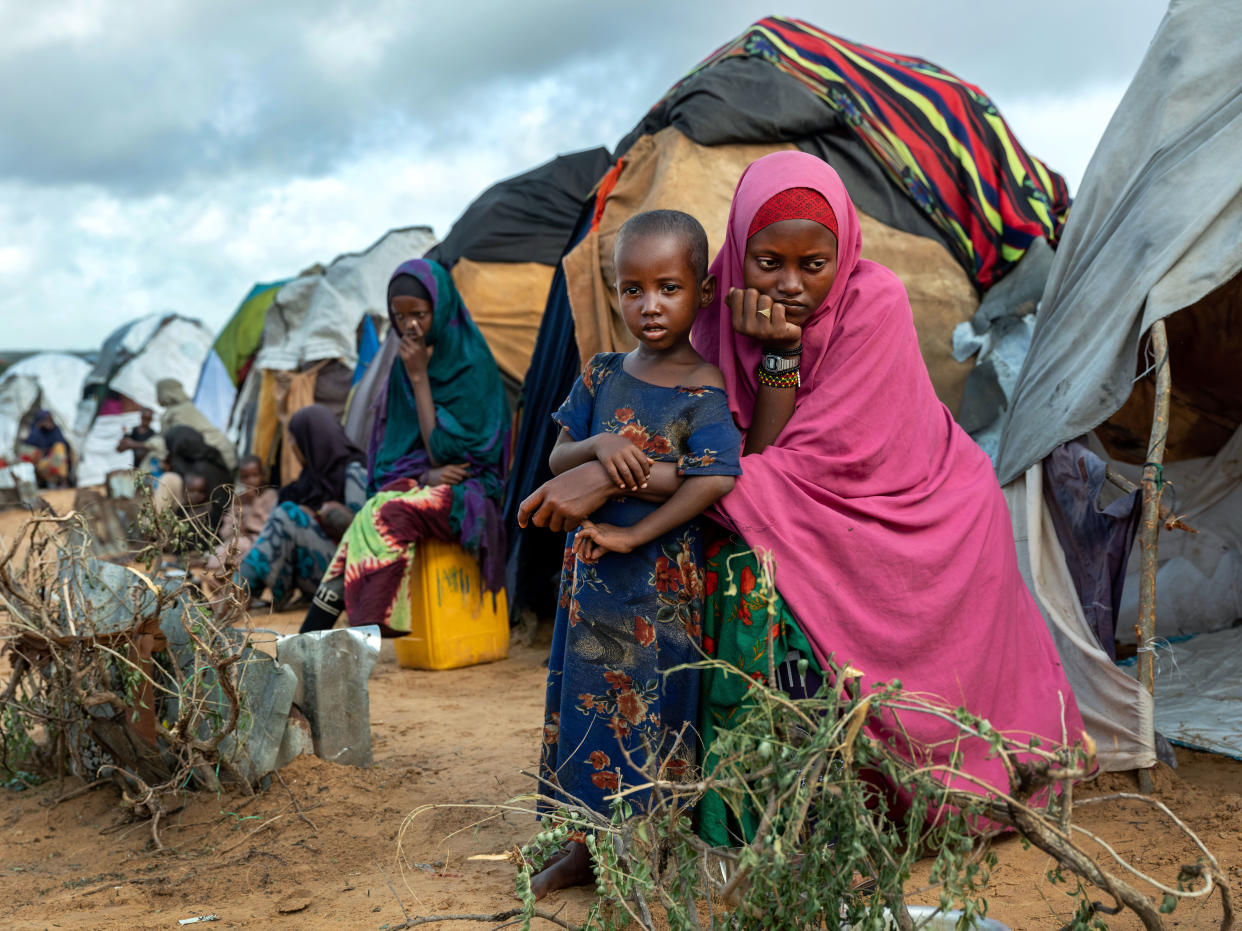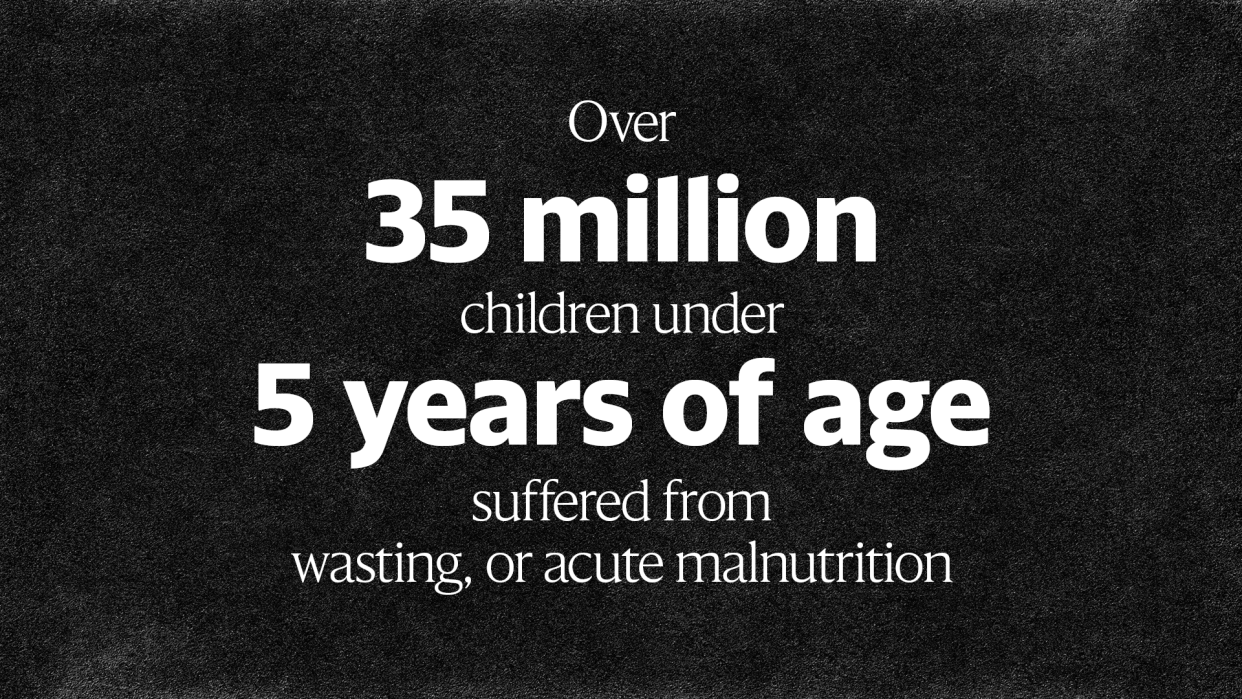More than a quarter of a billion people faced severe hunger in 2022

More than 258 million people across 58 countries faced severe hunger in 2022, the highest rate of food insecurity in the last seven years, according to a new United Nations-led report. Fallout from Russia’s war in Ukraine, local conflict, climate change and the economic impacts of COVID-19 — including high inflation, the report found — were the major drivers of hunger.
Still, despite these challenges, many critics say food insecurity at this scale is largely avoidable.
“Organizations and others in power have been ringing the alarm bells for years, as this latest hunger crisis is part of a long and avoidable cycle,” Emily Farr, food and economic security lead for Oxfam, a global organization that focuses on the alleviation of global poverty, told Yahoo News. “But the international community doesn't seem to heed these warnings and fulfill their responsibilities until true catastrophe hits, and even then it’s still not enough.”
A spike in hunger
The 2023 Global Report on Food Crises, which published its findings last month, found that last year saw a 33% spike in the number of people facing hunger globally from the previous year, up from 193 million people in 53 countries and territories in 2021. It was also the fourth consecutive year that an increasing number of people experienced Phase 3, or above, food insecurity, which designates their situation as serious, according to the Integrated Food Security Phase Classification (IPC), a tool for improving food security analysis and decision making.

Acute food insecurity means people are in dire need of food, nutrition and livelihood assistance. The report’s authors say that competing priorities with crises taking place all over the world often leave resources thin, which results in issues like hunger, particularly in poorer countries, growing increasingly dire over time.
“The funding is so stretched against the need that we have to make tough decisions on who gets food and who doesn’t get food with the limited funding we have,” Rebecca Richards, the head of the Global Network Against Food Crises, which produces the report, told Devex, an independent news organization covering global development.
According to the report, which was commissioned by U.N.’s Food and Agriculture Organization, the World Food Programme, the World Bank, the European Union, the United States and members of the Global Network Against Food Crises, about 40% of the population in IPC Phase 3 or above — or about 108 million people — lived in just five countries: the Democratic Republic of the Congo, Ethiopia, Afghanistan, Nigeria and Yemen.
People in seven countries — Afghanistan, Burkina Faso, Haiti, Nigeria, Somalia, South Sudan and Yemen — faced starvation at some point last year.

Dr. Manenji Mangundu, Oxfam’s South Sudan country director, told Yahoo News that hunger has plagued the region so severely that girls as young as 11 years old are being forced into marriage so that their family receives some income from the exchange. Mangundu called the situation “alarming” because funding alone could solve many of the issues.
“This can be avoided because these are negative coping mechanisms they're taking,” he said.
Causes of the food crisis
The report cites “interconnected, mutually reinforcing drivers” for the rise in global hunger, with the biggest factor being the economic shocks as a result of Russia’s war in Ukraine, which is known as “Europe’s breadbasket.” Somalia alone imports about 90% of its wheat from Ukraine and Russia, and the war there has significantly reduced shipments, causing a sharp rise in prices. The fallout from war, further exacerbated by COVID-19’s impact, drove severe hunger in 27 countries, covering 84 million people.

The second-largest driver was climate change, which affected 117 million people across 19 countries/territories, followed by local conflict, which affected 57 million people across 12 countries.
U.N. Secretary-General António Guterres called the report’s findings “unconscionable.”
“This [report] is a stinging indictment of humanity’s failure to make progress towards Sustainable Development Goal 2 to end hunger and achieve food security and improved nutrition for all,” Guterres wrote in the report’s foreword.

Nowhere is the failure to react to the growing crisis more evident than in sub-Saharan Africa, where inhabitants — who are fishermen, herders and farmers who depend on agriculture — have found it nearly impossible to survive. Having been on the verge of famine for the last two years because of years-long droughts fueled by climate change in the region, millions have abandoned their homes in search of nourishment and pastures for animals. In dire circumstances, adults are going days without food so they can feed their children and animals, and education has become an afterthought for many communities, which will have a long-lasting impact.
In many of these regions, including sub-Saharan Africa, young children have also taken the brunt of the crisis. Over 35 million children under 5 years old are suffering from wasting, or acute malnutrition, also defined as low weight-for-height; 9.2 million of them have severe wasting, the most lethal form of undernutrition and a major contributor to child mortality.

Projections and solutions for 2023
The report projects that up to 153.3 million people of the analyzed population will experience high levels of acute food insecurity in 2023. To combat further extreme hunger, experts urge the international community to act early and often to avoid more catastrophe. Such efforts include educating regions on how to adapt to how the changing climate affects their food production, and learning how to invest their earnings and supporting peace initiatives. Experts also stress the need to address the drivers of food insecurity, which include Russia’s war in Ukraine; this focus could, in turn, help avoid the cycle of raising money to try to fix a problem already out of control.
“Tackling hunger may seem overwhelming, but we know what works to meet people's immediate needs and to get communities back on track for the future,” Farr said. “We need to get food and money to people in need now, to support them to protect and recover their livelihoods … and once we've averted the worst from happening now, we need to work with communities to prevent this from happening again.”
